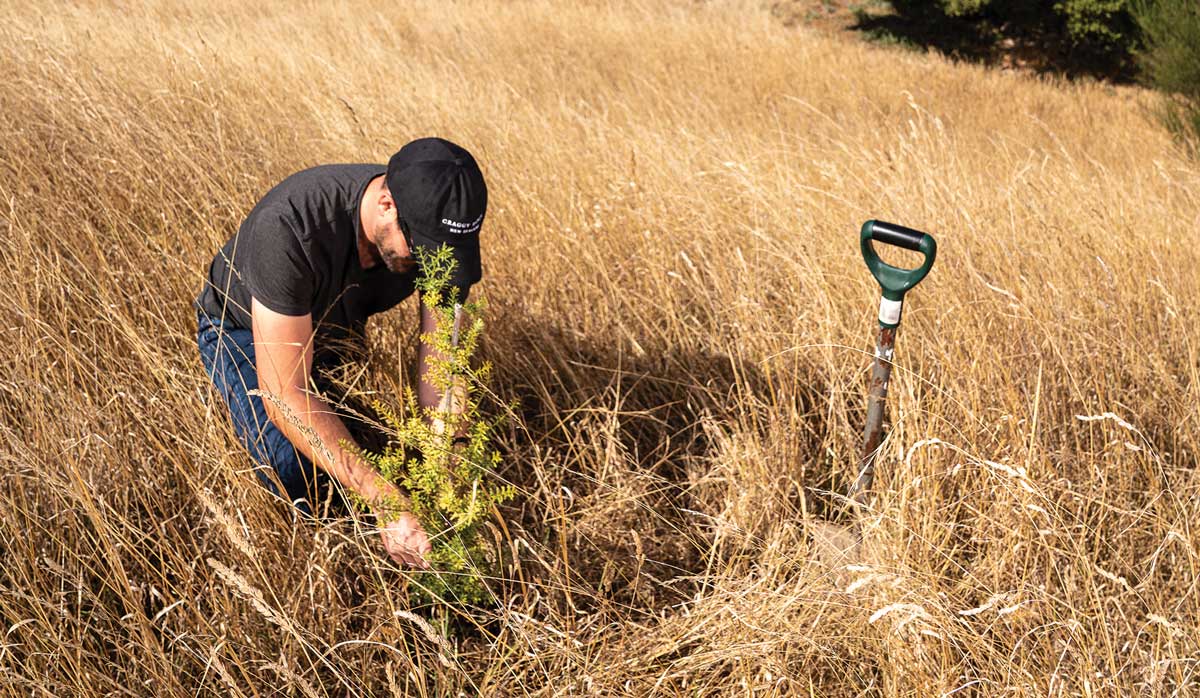Simon Upton urges cross-party consensus on New Zealand environmental goals
Parliamentary Commissioner for the Environment Simon Upton is calling for cross-party consensus on the country's overarching environmental goals.
A New Zealand wine company is planting more than 150,000 native trees and plants in and around its Martinborough vineyards, with 100,000 plants to go in this winter alone.
The massive biodiversity effort is part of doing better by the land, environment and people Craggy Range Vineyards relies on, says Chief Executive Michael Wilding.
“The key thing for us and the Peabody Family was, how can we continue to evolve our farming practices better and also engage with and look after our community?”
Michael says strong economic performance over the past three years has allowed Craggy Range to reinvest in its key sustainability pillars, including the roll-out of a major planting plan, increased water storage and a focus on organic production, as well as the Children’s Christmas Foundation (see sidebox).
The company has a biodiversity programme of 100,000 trees to be planted in June this year, and another 60,000 in June 2021, from tall forests of kahiketea and tōtara to low-lying riparian areas of grasses and shrubs, interspersed with tī kōuka (cabbage trees). An artist’s impressions shows the two vineyards transformed, with wide margins of native bush, and a large grove at the centre.
“This will be one of the largest biodiversity programmes in the New Zealand wine industry and hopefully an opportunity for New Zealand wine to show leadership on a global front,” says Michael. Staff on the Te Muna vineyards are excited by the planting plan, he says.
“This also allows Craggy Range to explore using carbon sequestration to offset its operations.”
It’s Craggy Range’s aspiration “to set the benchmark for biodiversity integration in New Zealand vineyards”, Michael says. “Both improving our monoculture and setting new standards for the region.”
 |
|---|
|
Anton Stadniczenko plants a totara at Te Muna vineyard. Photo: Richard Brimer. |
The increased biodiversity is not only good for the environment, but has led to improved wine quality, he says. “This is primarily due to increased natural yeast in the vineyard and reduced pest pressure, due to an increase in native birds.” The winery team is hoping to work with Dr Matthew Goddard at the University of Auckland to better understand how the biodiversity plantings influence indigenous yeast in the vineyard.
Meanwhile, the company is investing heavily in water storage in Martinborough and Hawke’s Bay, to reduce pressure on rivers, says Michael. “This will mean we take our allocation in winter when the river is in full flow and reduce our summer take.”
The third tier of its environmental push is an increase in focus on farming organically, with more than 10 percent of this year’s production, across six blocks, in organics. “We are looking to learn and to expand this programme and to continually evolve our practices,” says Michael.
The company has sought advice from specialist consultants, and employed Jonathan Hamlet - ex-Chairman of Organic Winegrowers - as its new National Vineyard Manager.
A Christmas cracker
In 2018, Craggy Range launched the Children’s Christmas Foundation, aimed at making a difference to the lives of children experiencing hardship in the Hawke’s Bay and the Wairarapa.
In its first year, Craggy Range staff and other supporters wrapped up 1,500 Santa sacks for kids who may otherwise not have received a gift, and last year that jumped to 5,500, with help from Hawke’s Bay Winegrowers’ members, families and associates.
The presents were geared towards enabling kids to have a strong start to the school year, and included backpacks, water bottles, sports balls, books and stationery.
Michael Wilding says there are a lot of people “doing it incredibly tough” in the regions the company operates in, including those that work in vineyards.
He says the Christmas initiative recognises the desire of Craggy Range and its staff to make a greater contribution to the community, and vineyard, winery, office and hospitality staff all come together on the project, resulting in a big cultural shift for the company. They’re passionate about good wine, he says, but they also want to have a good impact.

The end of the year is fast approaching, so here are some thoughts on a few of the significant developments…

OPINION: When I moved to Marlborough two decades ago, I found countless lines of tidy vines, neatly mowed and carefully…
The large 2025 harvest will exacerbate the wine industry's "lingering" supply from recent vintages, New Zealand Winegrowers Chief Executive Philip…
If you find a new consumer in a developed wine market, you are taking them from someone else, says Blank…
OPINION: Sauvignon Blanc was famously introduced to New Zealand by Ross Spence of Matua Valley, and then serendipitously planted in…